Equipment
Looking at Clear and UV Filter Spectrograms
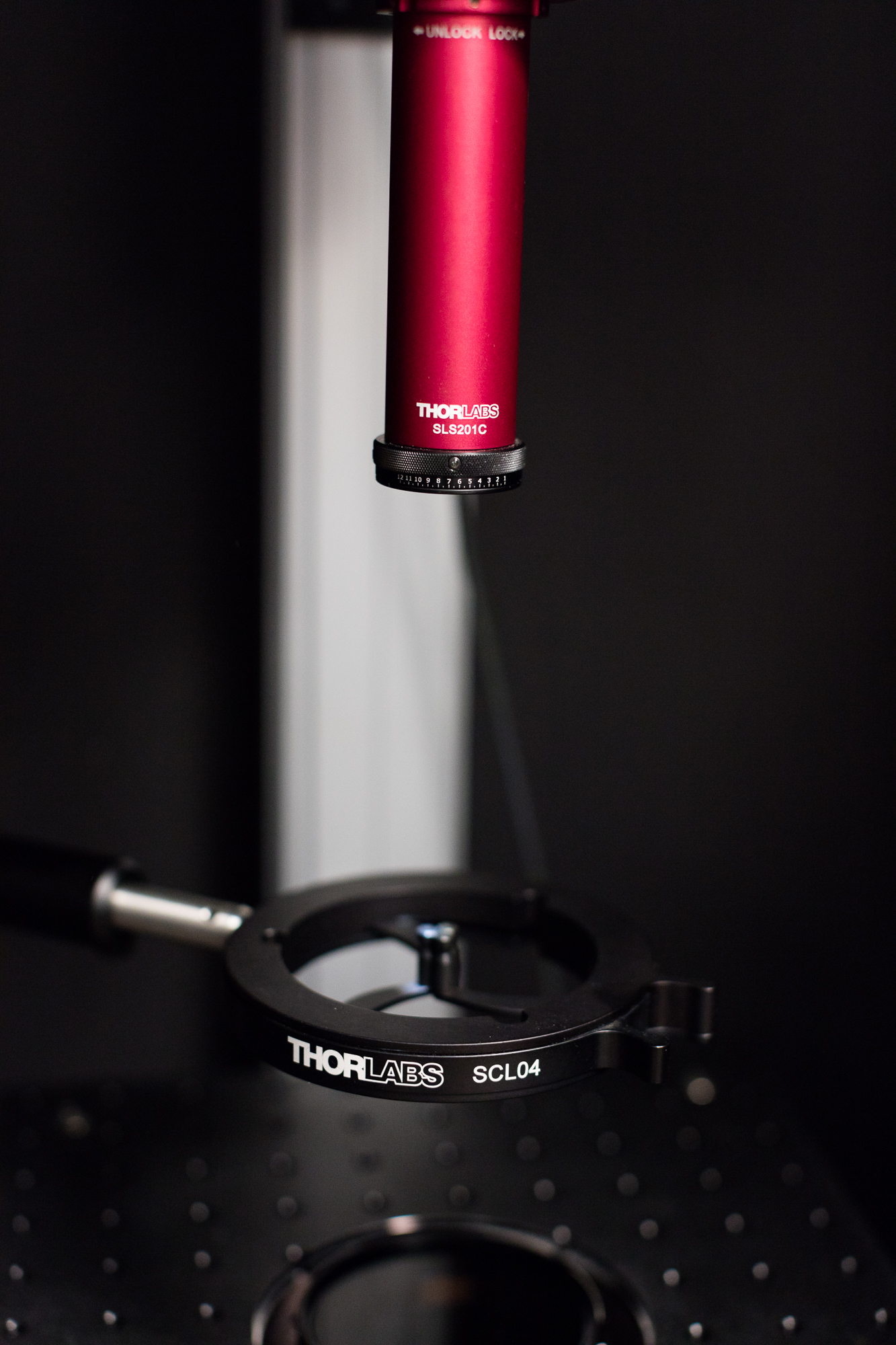
I’ll start by saying, this is not an article – or at least not a complete one. When I wrote My Not Quite Complete Protective Filter Article, I promised to try to add transmission spectrograms so that you could see not just the wavelength I tested for transmission, but also how the rest of the light wavelengths were transmitted. So this is just an addendum to that article. If you haven’t read that, then please don’t read this until you have.
Mainly I was interested in how much difference there might be in the color cast of the various filters. I’m not numerically quantitating that here, but looking at the graphs, you can probably tell if one passes red light more easily than green or blue and therefore seems warmer, etc.
I honestly could care less about how well any of these block UV light. But many of these are called UV filters so it seemed like we should check the UV part, so I ran the spectra down into UV range so both of you who are interested in that can see it.
A couple of points though:
- We very accurately measured transmission at a 635nm wavelength (red light) using a laser in the previous blog post. The spectrometer as we did this test is NOT as accurate for absolute transmission value, so don’t look at a graph and say “oh, well the spectrogram said it was 99.8%, and this looks like 97%.” If you do that we’ll know you can’t read and won’t take you seriously.
- Each spectrogram is quite accurate for relative color. So you can see that a given filter passes more light at certain wavelengths than others. You say filter X passes green light better and filter Y blocks more blue light. But you can’t say filter X passes 98.5% of green light, and filter Y passes 97.6%. This is all about the overall color cast of the filters and not about absolutes.
So without further ado, here are the spectrograms. Oh, there is one ado. If you notice that a filter from the first article is missing from this article, you may assume that I broke it between then and now. Sometimes science requires sacrifice. Also, I’ve thrown in a couple of ceramic filters, brand not listed because they were loaned to me as a favor so that you can see the ceramic spectrum.
Oh, and to give credit where it’s due: Brandon designed the spectrometer using Thor-labs components that kept things somewhat affordable, Markus and Max wrote the software to make the pretty graphs, and Aaron and I did the testing. And made the blackout box, which was like having kindergarten flashbacks and making a cardboard-box fort.
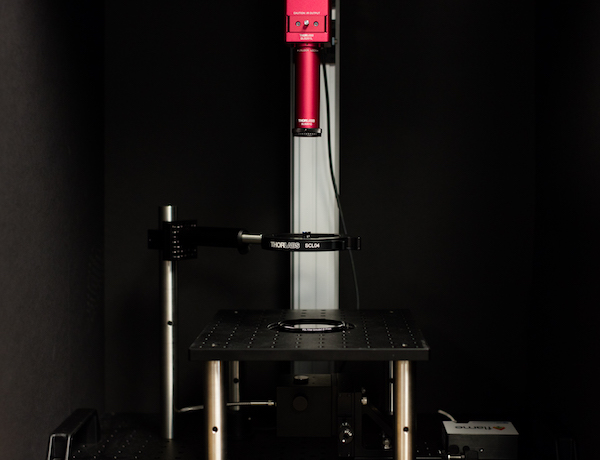
Filter Spectra in Alphabetical Order
B&W Digital Pro UV Haze
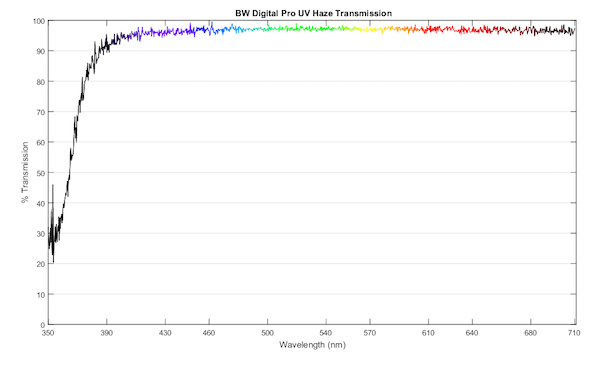
Olaf Optical Testing, 2017
BW XS-Pro Clear MRC-Nano Coated
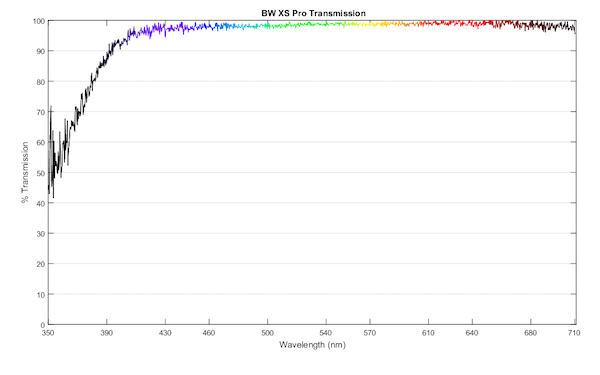
Olaf Optical Testing, 2017
BW F Pro Clear MRC
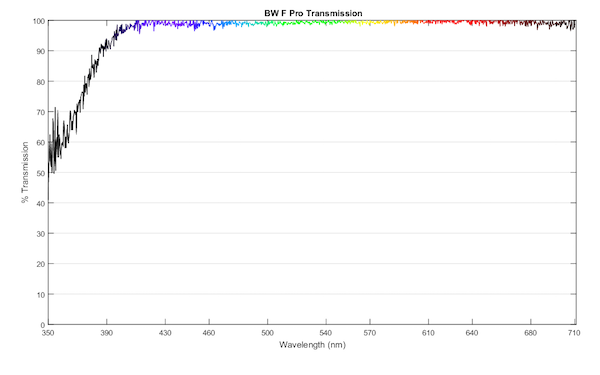
Olaf Optical Testing, 2017
Canon Protect

Olaf Optical Testing, 2017
Chiaro 98
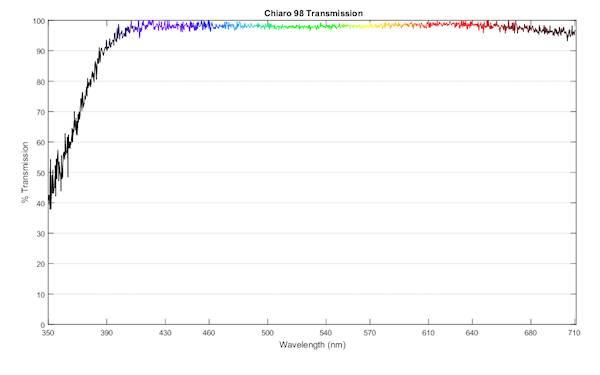
Olaf Optical Testing, 2017
Ceramic – Extra Thick
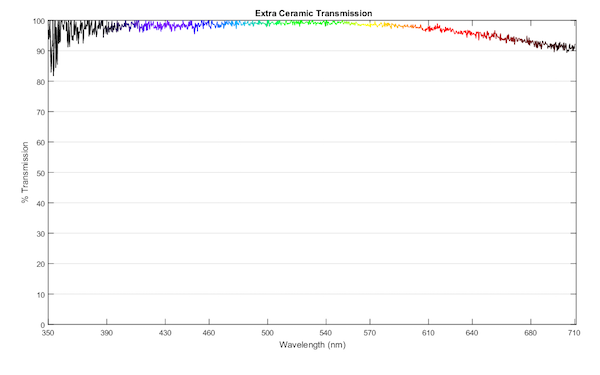
Olaf Optical Testing, 2017
Ceramic – Thin
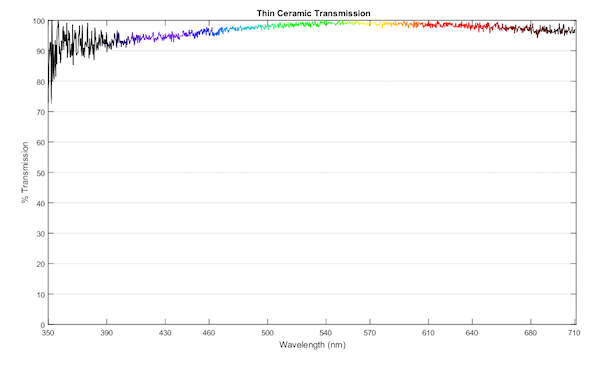
Olaf Optical Testing, 2017
Heliopan Protection
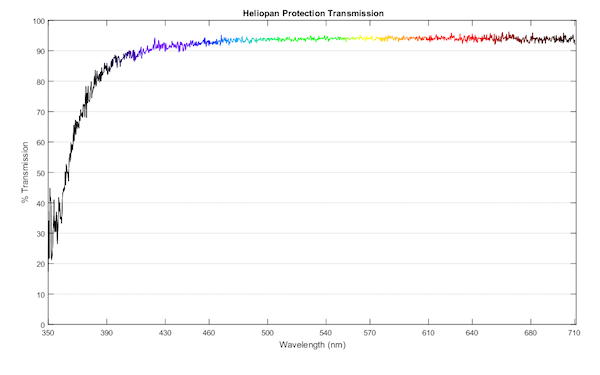
Olaf Optical Testing, 2017
Heliopan UV SH-PMC Multi
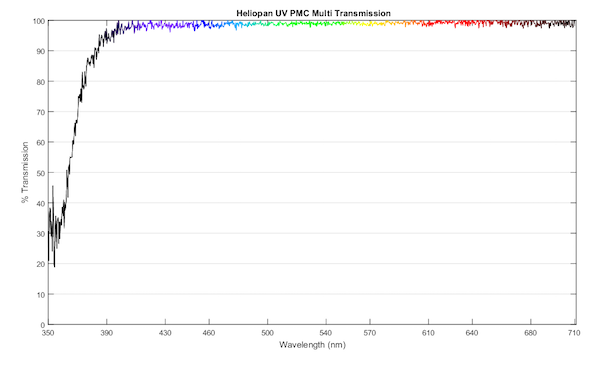
Olaf Optical Testing, 2017
Hoya HMC Multicoated
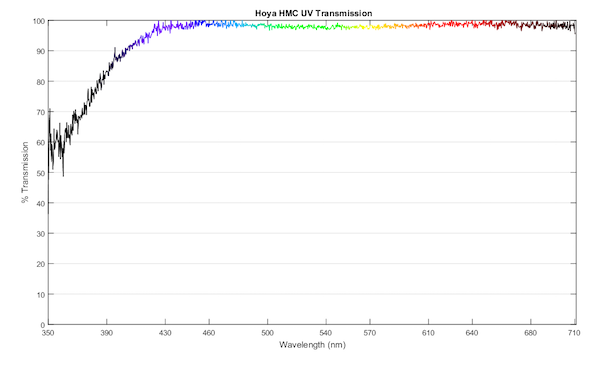
Olaf Optical Testing, 2017
Hoya NXT HMC
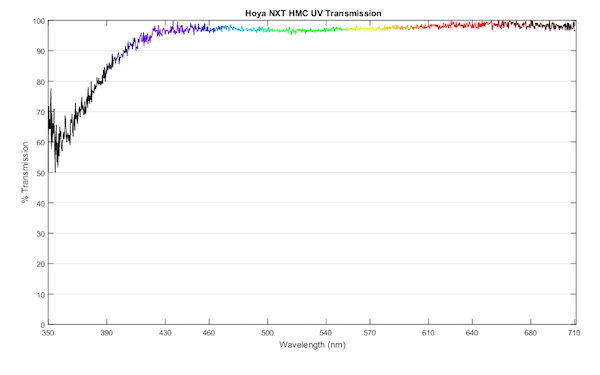
Olaf Optical Testing, 2017
Hoya HD Protect
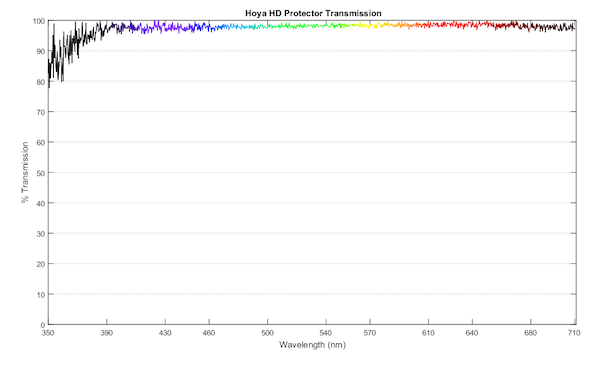
Olaf Optical Testing, 2017
Mefoto Lens Karma
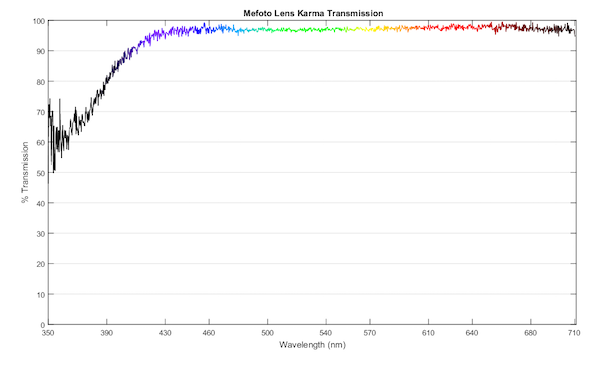
Olaf Optical Testing, 2017
Marumi Exus
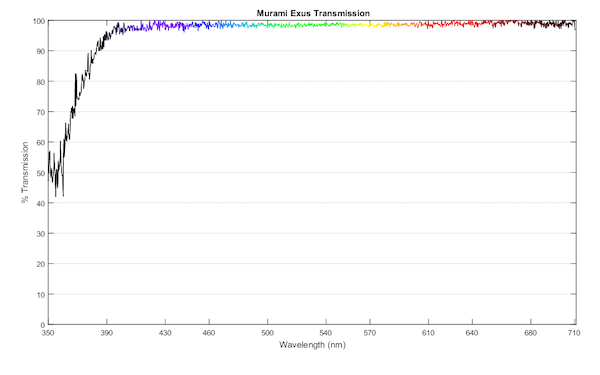
Olaf Optical Testing, 2017
Nikon Neutral Color
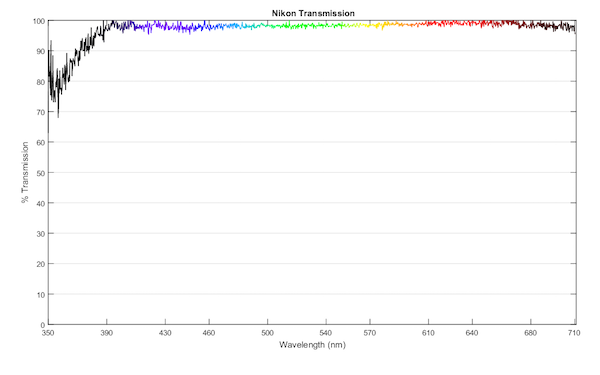
Olaf Optical Testing, 2017
Tiffen Digital HT
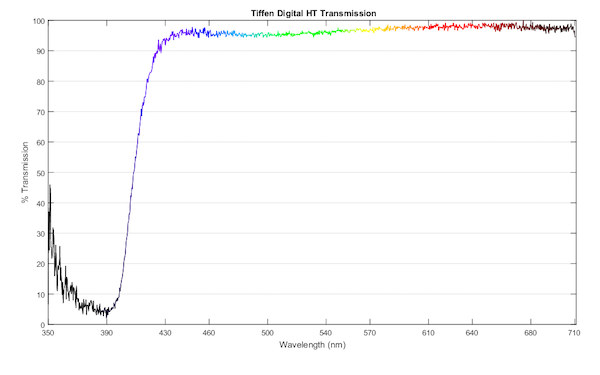
Olaf Optical Testing, 2017
Tiffen Ultra
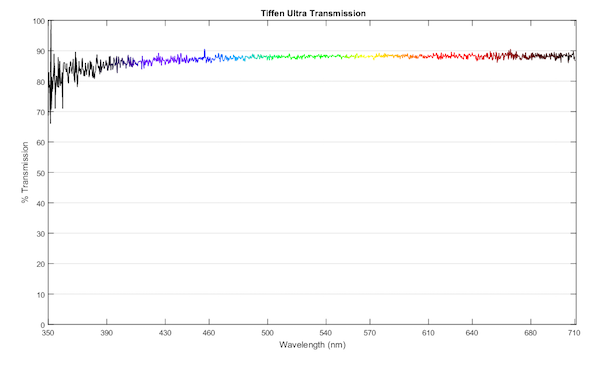
Olaf Optical Testing, 2017
Zeiss T*
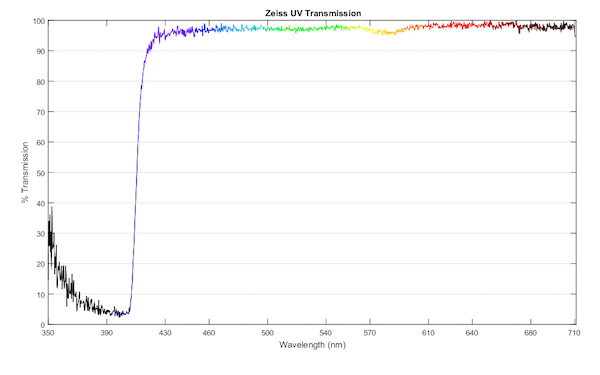
Olaf Optical Testing, 2017
So, What Did We Learn Today?
Not a lot. The amount of UV filtering that goes on seems really rather random in the non-UV filters. As does the wavelength at which they start UV filtering and how quickly it drops off. The Zeiss T*, for example just removes everything. Some of the others just kind of meander down to removing some of the UV, as do some of the ‘clear’ filters. Some get further into the UV spectrum before they filter, while others start just on the visible side of UV. Maybe this matters to some of you. Probably not.
Most of the filters transmit a pretty flat spectrum in the visible range, although several, led by the Tiffen Digital, will have a distinctly warm cast. And in the very limited sample size we tested, ceramic filters might look cool, or not. So I guess we learned that same old lesson: white balance with your filter on, or shoot in raw, or both.
Max Bruggerman, Roger Cicala, Aaron Closz, Brandon Dube, Markus Rothacker
Lensrentals.com
September 2017
What is best in life, Roger?
To crush the marketing departments. See them driven before you. And to hear the lamentations of their sales reps.
Author: Roger Cicala
I’m Roger and I am the founder of Lensrentals.com. Hailed as one of the optic nerds here, I enjoy shooting collimated light through 30X microscope objectives in my spare time. When I do take real pictures I like using something different: a Medium format, or Pentax K1, or a Sony RX1R.
-
Petrochemist
-
Fink
-
Olivier
-
David Bateman
-
macona
-
macona
-
David Bateman
-
Brandon Dube
-
macona
-
Volker Bartheld
-
Pedro Aphalo
